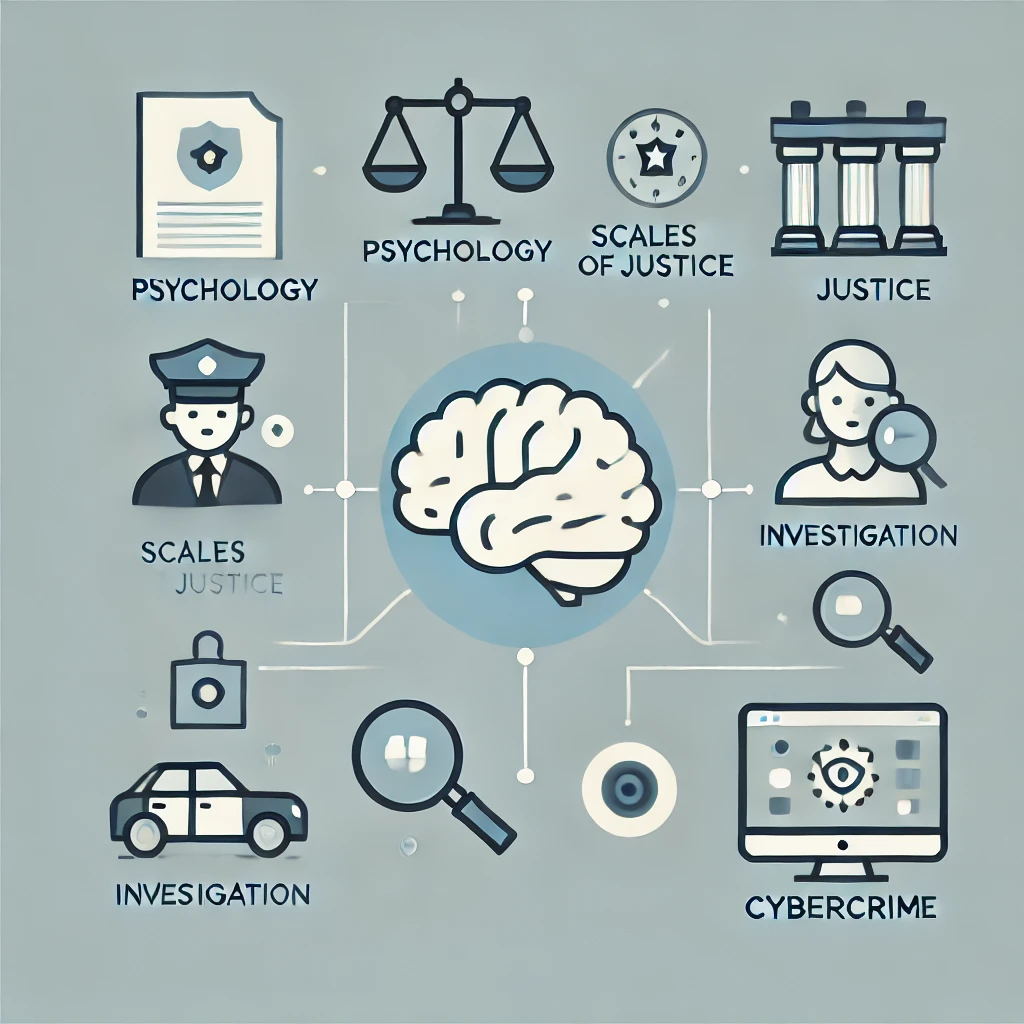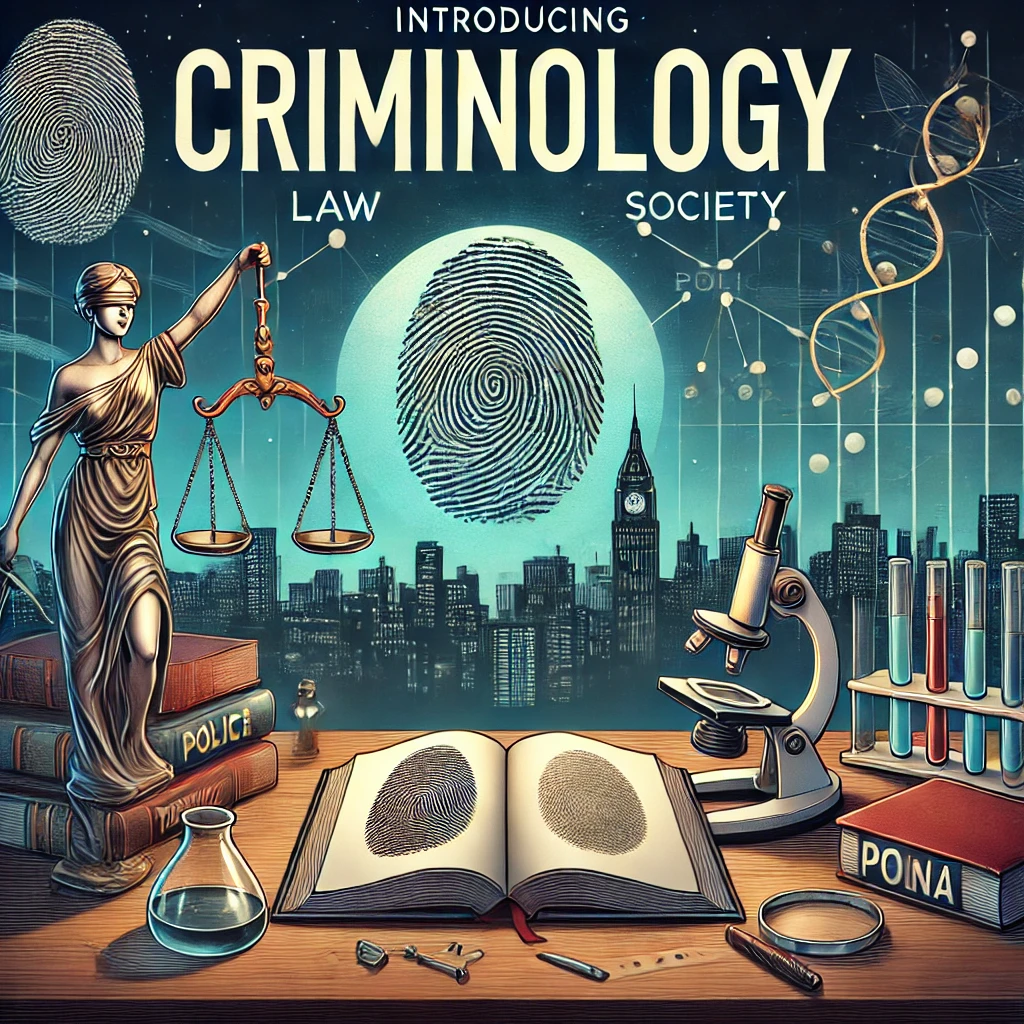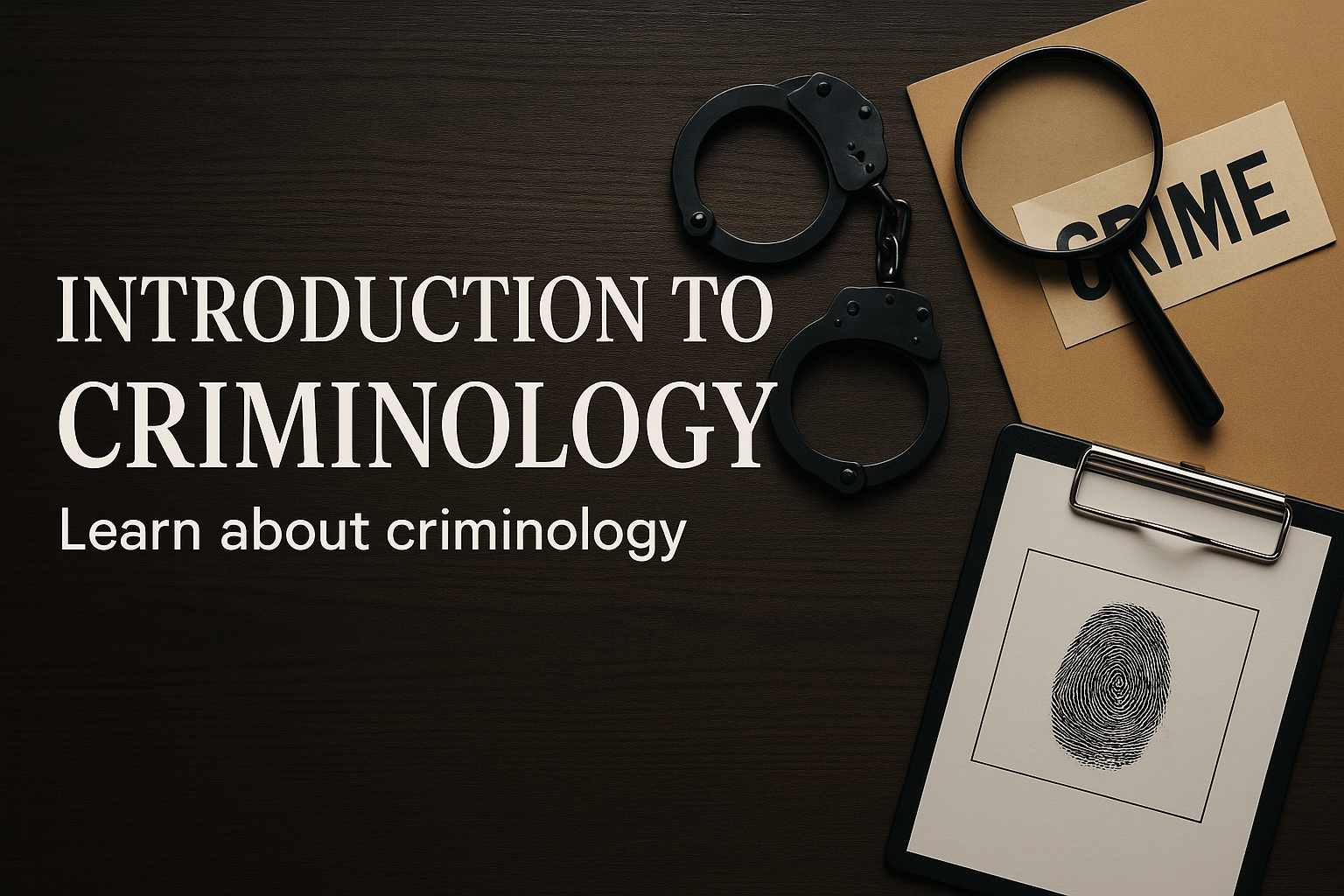1. Criminology
Introduction
Criminology is the study of crime as a social and behavioral phenomenon, addressing its causes and developments while examining the factors that lead to criminal behavior. It also explores the optimal methods for combating this phenomenon through the criminal justice system. Criminology encompasses a wide range of supporting sciences, such as psychology, sociology, and criminal justice, which provide a comprehensive understanding of everything related to crime and criminal behavior.
Moreover, criminology seeks to bridge the gap between theoretical understanding and practical application. Through research and analysis, criminologists aim to propose reforms to current criminal justice policies, improve rehabilitation strategies, and design prevention programs tailored to specific communities. Criminology not only helps us understand the criminal mind but also highlights the importance of early interventions and social responsibility in mitigating crime rates.
2. Fundamentals and History of Criminology
The history of criminology dates back to ancient times, when attempts to understand crime were made through primitive methods linking it to myths and supernatural powers. Over time, the perspective evolved, viewing crime as a social phenomenon deserving of scientific study. This section could address the scholars who laid the foundations of criminology, such as Cesare Beccaria in the eighteenth century, who advocated for the importance of having just laws and appropriate punishments for crime.
In the 19th and 20th centuries, the field witnessed the emergence of more empirical approaches with figures like Cesare Lombroso, who introduced biological theories linking physical traits to criminal tendencies. Later, the Chicago School emphasized the role of urban environments and social structures in fostering criminal behavior. These foundational contributions have shaped modern criminology into a dynamic discipline that evolves with societal changes and scientific advancements.
3. Theories of Crime
Crime theories are a central focus in criminology, seeking to explain the motives and factors that lead to criminal acts. These theories include rational choice theory, biological theory, social theory, and psychological theory. Each theory provides a specific interpretation, such as social theory’s emphasis on the influence of the surrounding environment on individuals.
Additionally, contemporary criminology has integrated interdisciplinary approaches, blending elements of multiple theories to provide more holistic explanations. For example, strain theory explores how individuals facing socioeconomic pressures may resort to crime as a coping mechanism. Labeling theory considers the impact of societal reaction and stigmatization on an individual’s self-concept, possibly perpetuating a cycle of deviance. These theories collectively guide policy-making, prevention strategies, and rehabilitative efforts in criminal justice systems worldwide.
4. Psychology of Crime
Explanation
The psychology of crime analyzes the individual behavior of criminals, understanding the psychological factors that motivate criminal acts. This field aids in analyzing the personalities of offenders by studying their psychological disorders, such as psychopathy and narcissism, which are critical elements in analyzing violent crimes.
Furthermore, forensic psychology plays a crucial role in profiling criminals, assessing their mental health, and determining their competency to stand trial. Psychological evaluations are instrumental in court proceedings, particularly in cases involving insanity defenses or juvenile delinquency. Understanding the cognitive distortions, emotional dysregulation, and learned behaviors that underpin criminality enables professionals to tailor therapeutic interventions and reduce recidivism rates.
5. Criminal Sociology
Criminal sociology focuses on understanding the relationship between society and crime. It examines social factors, such as family disintegration, poverty, and unemployment, as contributing factors to increased criminal behavior. Social theories, such as the “opportunity” theory, illustrate how social conditions affect criminal decisions.
Beyond individual influences, criminal sociology also explores structural inequalities, cultural norms, peer group dynamics, and media portrayals of violence. It emphasizes that crime is not merely a product of individual choice but is shaped by the environment in which a person lives. Programs aimed at community development, education, and family support systems are grounded in sociological insights, aiming to tackle root causes of criminality rather than merely its symptoms.
6. Analysis of Criminal Behavior
Analyzing criminal behavior is an important step in combating crime, allowing for the study and analysis of behavioral patterns among criminals. This analysis includes specific behaviors and indicators that warn of criminal intentions, which can be useful in various applications, such as criminal investigations.
In practical terms, behavior analysis supports law enforcement through profiling techniques, risk assessment tools, and behavioral prediction models. By recognizing early warning signs—such as obsession with violence, lack of empathy, or repetitive antisocial conduct—authorities and mental health professionals can intervene before a crime is committed. Technological advancements, including data mining and artificial intelligence, now assist in the identification of crime patterns and high-risk zones, enhancing both prevention and response strategies.

7. Forensic Psychology in Violent Crimes
This section addresses forensic psychology as an explanatory factor for violent crimes. It focuses on the psychological motives and environmental factors that drive some individuals to commit heinous acts, and this field is sensitive as it deals with complex cases such as serial killings and violent assaults.
Forensic psychology helps in profiling offenders, identifying mental disorders, and understanding the cognitive and emotional processes that precede violent behavior. By examining elements such as trauma, personality disorders, and early life experiences, forensic psychologists can assist courts in determining criminal responsibility and competence to stand trial. Additionally, their insights are crucial in risk assessment and prevention strategies, particularly in institutions dealing with high-risk individuals.
8. Types and Classifications of Crimes
Crimes can be classified into various types, including financial crimes, violent crimes, drug offenses, and cybercrimes. This classification provides an understanding of the different types of criminal behaviors, allowing for the effective analysis of each type to combat crime.
Each crime category has its own causes, methods, and implications. For instance, financial crimes often involve deception and manipulation, whereas violent crimes are more direct and aggressive. Understanding these distinctions helps tailor legal, psychological, and sociological responses. Classification also assists policymakers in prioritizing crime control efforts, allocating resources, and designing specialized units within law enforcement to address each category with precision and expertise.
9. Criminal Justice and Punishments
This chapter offers an overview of the judicial and criminal system and its role in addressing crimes. This includes how punishments are applied and their effectiveness in deterrence and rehabilitation. The evolution of punishments over time and their impact on society can also be discussed, as well as how the criminal justice system helps reduce crime rates.
Historically, punishment has evolved from public executions and corporal penalties to modern systems focused on human rights and rehabilitation. Today, the effectiveness of punitive measures is judged not only by their severity but by their ability to prevent recidivism and promote social harmony. The balance between retributive justice (punishment fitting the crime) and restorative justice (repairing the harm caused) remains a central debate in criminal policy. This chapter also explores how legal reforms and public opinion shape sentencing guidelines and prison policies.
10. Rehabilitation of Offenders
This chapter focuses on rehabilitating offenders through programs aimed at improving their behavior and reintegrating them into society. The success of these programs relies on the effectiveness of rehabilitation and the methods of implementation, thereby reducing the likelihood of reoffending.
Rehabilitation initiatives may include educational opportunities, vocational training, psychological counseling, and drug addiction treatment. These programs are often tailored to the individual’s background and risk factors. Studies have shown that reintegration efforts significantly reduce the rates of recidivism, especially when they include post-release support such as housing assistance, employment opportunities, and community mentorship. The shift from punitive to rehabilitative justice marks a progressive approach toward humanizing the correctional system and focusing on long-term public safety.
11. Cybercrime
Cybercrime includes crimes committed online, such as electronic fraud, cyber attacks, and identity theft. With the advancement of technology, these crimes have significantly increased, making this chapter essential for understanding the nature of crimes in the digital age.
Cybercrime challenges traditional policing due to its borderless nature and the anonymity it affords offenders. It affects individuals, corporations, and even national security. To combat it, law enforcement agencies employ specialized cyber units equipped with digital forensics tools and encryption-decryption technologies. Furthermore, public awareness, legislative reform, and international cooperation are vital in the fight against online crimes. This field is rapidly evolving, requiring continuous adaptation and training in both legal and technical domains.

12. Conclusion
In conclusion, criminology offers us a deep and comprehensive view of the factors leading to criminal behavior and helps us develop effective judicial systems and tools to reduce crime. By understanding the various chapters of criminology, societies can build preventive and rehabilitative systems that contribute to reducing crime rates and promoting justice.
The study of criminology is not just about understanding crime, but also about human behavior, societal structures, and systemic responses. As crime evolves, so must our approaches, integrating interdisciplinary research, advanced technology, and inclusive policies. Only through a balanced, informed, and humane lens can we hope to foster safer and more just societies for all.

